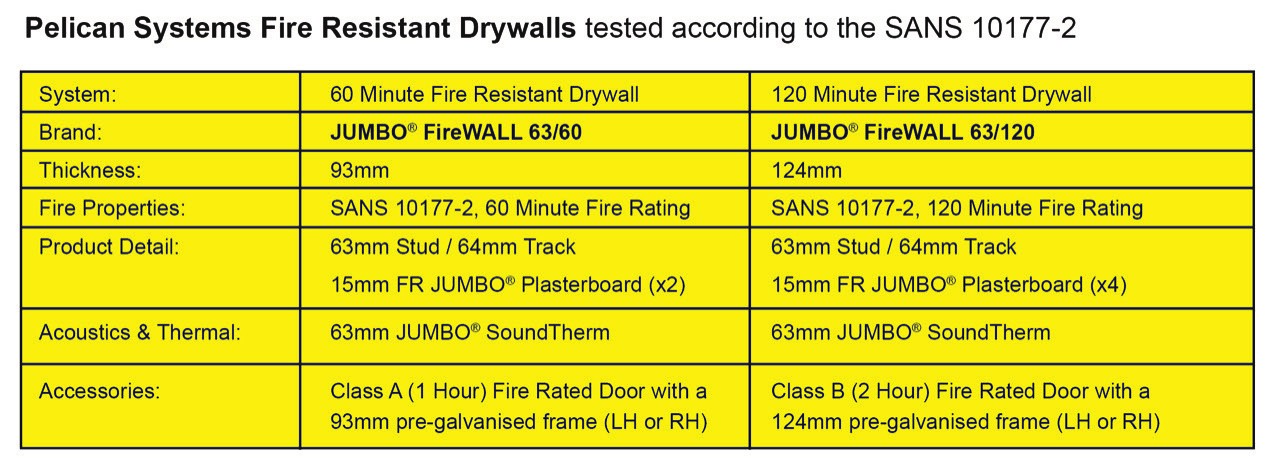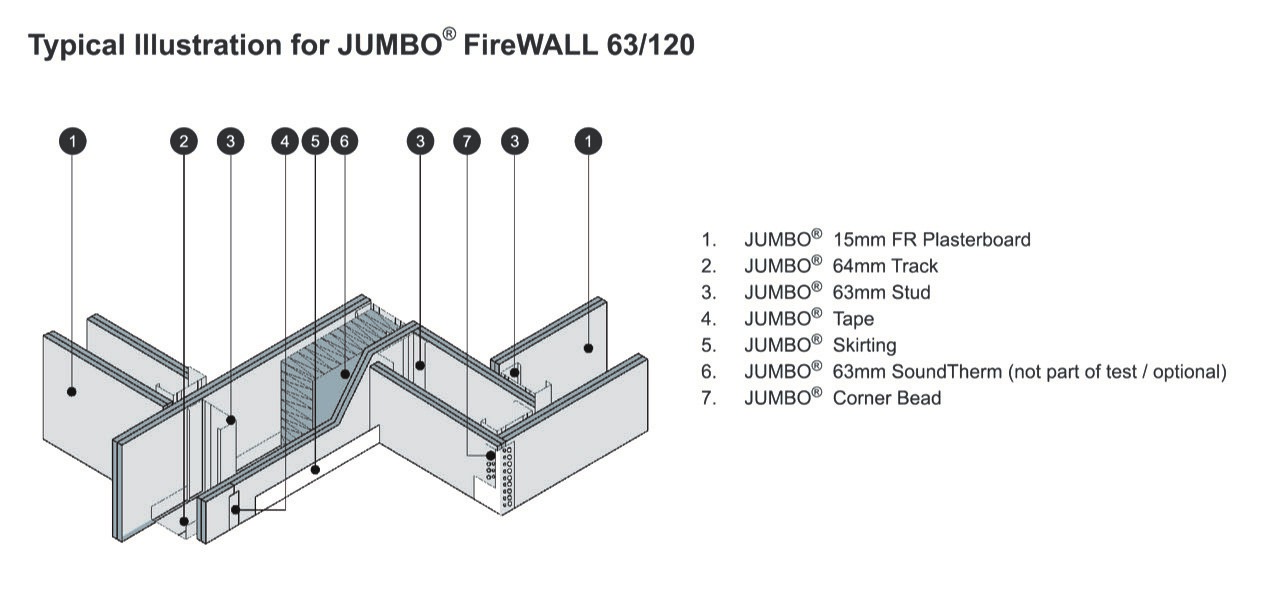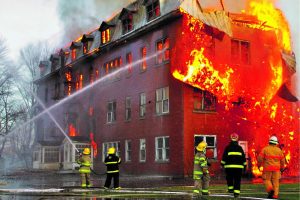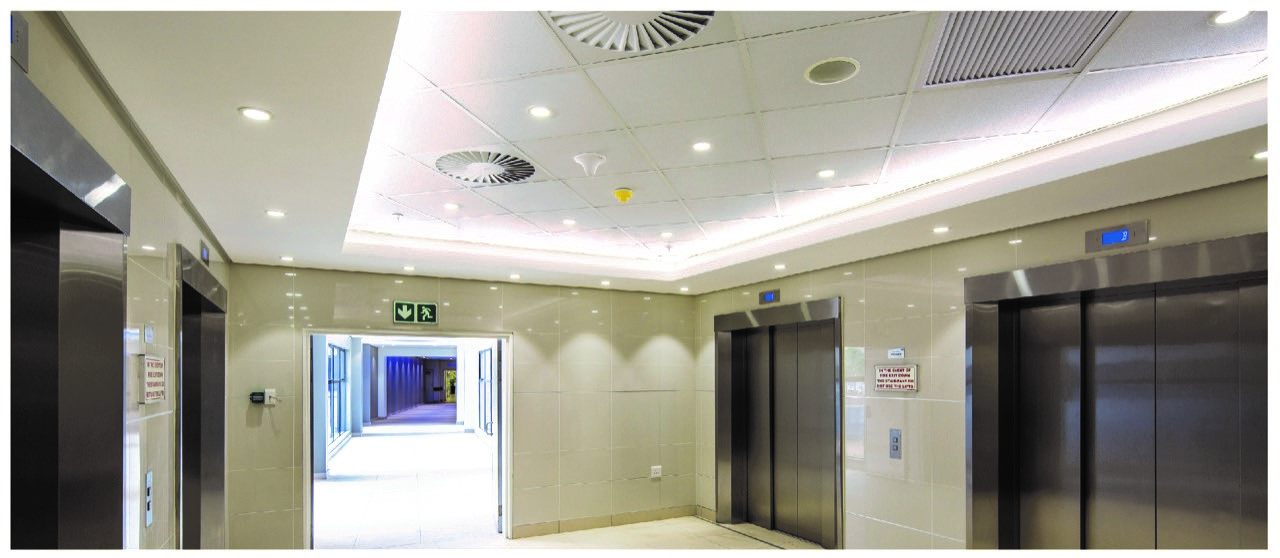Fire Resistant Drywall’s, such as our Jumbo Firewalls, are required in many different areas of a building depending on the different occupancies within the building.
There are multiple types of occupancy and the SANS 10400: Part T – Fire Protection of the National Building Regulations covers a vast number different requirements that relate to dwelling houses as well as to every other possible type of building from hospitals to parking garages.
This is a highly regulated and important safety legislation to prevent loss of life from a fire and needs to be taken seriously and complied with.
Ceiling and Partitioning Contractors and glaziers are not fire experts and it is therefore the onus of the client/specifiers to indicate the partitioning requirements in respect of location and degree of resistance to fire in minutes. According to SANS 10177-Part T, a Competent Person must specify the fire requirements of partitioning in respect of resistance to fire.
Pelican Systems have conducted two tests for a 60 and 120 Minute Fire Resistant Drywall, both of which were successful and met the required standards.

South African Fire Test Standards and our results for our JUMBO FireWALLS:-
The South African Fire Tests are conducted according to the SANS 10177-2 protocol, fire testing of materials, components and elements used in building part 2.
Our JUMBO Drywall Fire Solutions were tested in Firelab’s large-scale air aspirated diesel furnace. The furnace temperature is controlled to follow the ISO standard time-temperature curve as stipulated in SANS 10177-2.
The Fire Resistance Rating (FRR) of the system is determined based on the following criteria:-
- Stability – The temperature of the primary stud and deflection are measured to assess stability
- Integrity – The system needs to have resisted the penetration of flames, and have no opening visible larger than 6mm wide or 150mm long
- Insulation – measures the temperature over the whole of the exposed surface, which needs to be within the specified test standards
System 1: Our JUMBO FireWALL 63/60
This is a non-loadbearing high performance 60 Minute Fire Resistant Drywall using a single 15mm Fire Resistant JUMBO Board on either side of the 63mm Stud and 64mm Track, giving the overall wall thickness of 93mm.
Test Results:-
The JUMBO FireWALL system met the criteria for a 60 minute non-load bearing wall system when tested in accordance with SANS 10177-2 test protocol.
The performance of the system satisfied all the criteria for Stability, Integrity and Insulation for 60 minutes.
Classification is as follows:- SANS 10177-2 – FR60 (Non-load bearing)
- Stability (R) – 60 minutes
- Integrity (E) – 60 minutes
- Insulation (I) – 60 minutes
System 2: Our JUMBO FireWALL 63/120
This is a non-loadbearing high performance 120 Minute Fire Resistant Drywall using two layers of 15mm Fire Resistant JUMBO Boards on either side of the 63mm Stud and 64mm Track, giving the overall wall thickness of 124mm.
Test Results:-
The JUMBO FireWALL system met the criteria for a 120 minute non-load bearing wall system when tested in accordance with SANS 10177-2 test protocol.
The performance of the system satisfied all the criteria for Stability, Integrity and Insulation for 120 minutes.
Classification is as follows:- SANS 10177-2 – FR120 (Non-load bearing)
- Stability (R) – 120 minutes
- Integrity (E) – 120 minutes
- Insulation (I) – 120 minutes

The test validity is 5 years so both tests will be valid up to August 2024.
Another important question to ask when making a decision with regards to which Fire Resistant Drywall System to use on your project is the validity of the test report.
It is very important to note, that for a fire rated system, the installation needs to be strictly in accordance with the relevant test reports, and approved system details and specifications. If not, the fire resistance could be compromised and the test result cannot be applied.
This is a common misunderstanding in the industry and it is important for there to be evidence and visibility that the system has been installed to specification so the test result can be applied with confidence.
Our JUMBO Fire Resistant Drywall Systems can be used in both fire-rated and non-fire-rated applications. Drywalls are often preferred due to their lightweight and their fast installation compared to other construction methods.
JUMBO FireWALLS are suitable for all types of new construction – commercial, residential, industrial, education, healthcare, and retail, as well as renovation and remodelling of buildings.

The objective of a FireWALL is to slow down the spread of fire, minimise the rise in temperature and retain its integrity and structure thereby allowing more time for evacuation and fighting the fire.
All plasterboard is naturally fire resistant and is classified as non-combustible according to the Building Code. The core slows down the spread of fire by releasing chemically bound water when heated. This is a similar process to evaporation and aids cooling.
JUMBO Fire Resistant Plasterboard contains fibre glass additives that improve the natural fire resisting properties of plasterboard making it an ideal product for use in Fire Resistant systems.
For more information on our two systems please follow this link to our website:-








